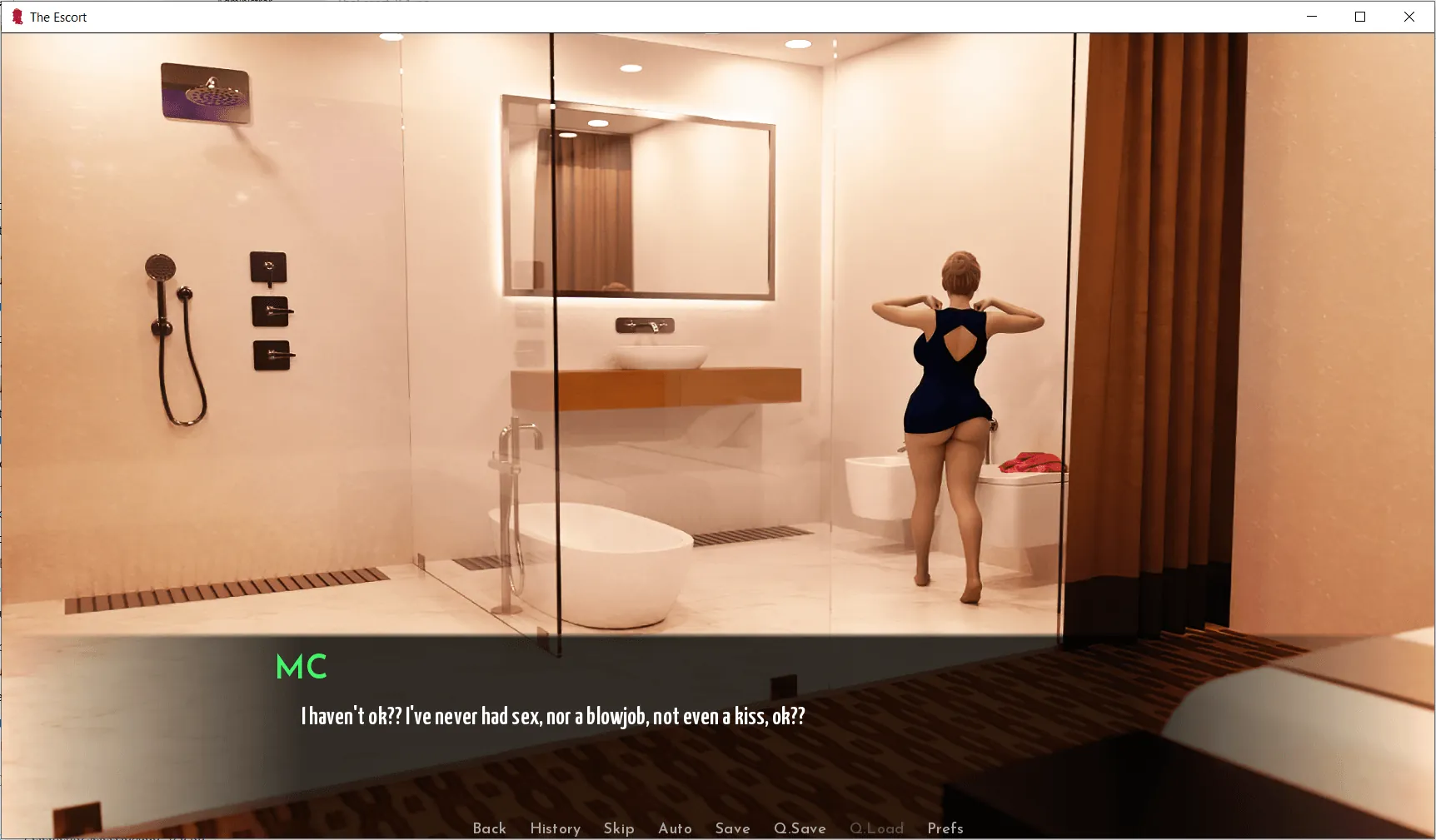
Lost in Paradise
Play Lost in Paradise
Lost in Paradise review
Explore gameplay mechanics, features, and what makes this title unique
Lost in Paradise stands out as a distinctive title in the gaming landscape, offering players a unique blend of mechanics and immersive gameplay. Whether you’re a seasoned gamer or exploring new titles, understanding what this game delivers is essential. This guide walks you through everything you need to know about Lost in Paradise, from core gameplay systems to what makes it a memorable experience. Discover how the game combines various elements to create an engaging adventure that keeps players invested from start to finish.
Understanding Lost in Paradise: Gameplay Mechanics and Core Systems
How the Core Gameplay Loop Works
Let me paint you a picture. 🎨 I first booted up Lost in Paradise expecting a relaxed island stroll. Within ten minutes, I was meticulously planning my day around resource gathering, social obligations with the island’s quirky inhabitants, and a mysterious cave system that seemed to hold the key to everything. This is the magic of the Lost in Paradise gameplay mechanics—it masterfully blends relaxation with a compelling, player-driven purpose.
At its heart, the core loop is a beautiful dance of discovery, contribution, and growth. ☀️ You wake up in your rustic beach hut, the sun shining, and the day is yours to shape. The core activities are deceptively simple:
- Explore: The island is vast, with each biome hiding secrets, new resources, and unique characters.
- Gather: Collect everything from seashells and fruit to rare minerals and lumber.
- Craft & Build: Transform your raw materials into tools, furnishings for your home, and even community projects.
- Socialize: Befriend the islanders, learn their stories, and complete requests for them.
What makes this loop so sticky is how these elements feed into each other. For instance, gathering better wood allows you to craft a stronger axe. That stronger axe lets you chop down a previously inaccessible tree, revealing a new area to explore. In that new area, you meet a new character who gives you a quest that rewards you with a blueprint for a new item. The cycle continues, and it’s incredibly satisfying. This seamless integration is a hallmark of the game’s interactive gameplay elements.
Pro Tip: Don’t try to do everything in one day! The game operates on a day/night cycle with an energy meter. Plan your activities. Spend a morning fishing, an afternoon mining, and your evenings socializing or decorating your home.
Here’s a walkthrough of a typical session that shows how these Lost in Paradise gameplay mechanics interconnect:
- 9:00 AM: I start my day by checking my mailbox. A villager, Elara, has asked for a specific type of tropical flower. I make a mental note. 🗓️
- 9:30 AM: I head to the forest to chop wood for a community center upgrade. While there, I notice the rare “Starlight Bloom” Elara wanted! I wouldn’t have seen it if I hadn’t been in the forest for another reason.
- 11:00 AM: With my wood delivered, I receive a reward of “Spirit Orbs” (the experience currency) and my relationship with the town improves. This directly feeds my player progression Lost in Paradise.
- 1:00 PM: My increased town reputation unlocks a new recipe at the carpenter’s shop. I now have a new goal: gather the materials to craft the “Deluxe Watering Can.”
- 3:00 PM: With my new watering can, I can efficiently tend to my expanded crop field, leading to higher-quality produce to sell or gift.
This is the genius of the design. Every action feels meaningful and connected to a larger, rewarding whole. The pacing is perfect—never too frantic, but always giving you a tangible “next step” to work towards.
Character Development and Progression Systems
If the core loop is the heart of the game, the character progression system is its soul. This isn’t a game where you simply level up a number; you tangibly feel your character growing stronger, more capable, and more connected to the world. Your journey is measured in skills, relationships, and tools, not just experience points.
The primary driver of your growth is the ability unlocking system. As you perform actions, you earn proficiency in corresponding skills like Foraging, Fishing, Mining, and Socializing. 🎣 Each skill has multiple tiers, and reaching a new tier often unlocks permanent passive bonuses or new active abilities.
For example, when my Fishing skill hit Tier 3, I suddenly gained the ability to see fishing hotspots in the water. At Tier 5, I could craft specialized bait. This ability unlocking system makes every activity feel rewarding because you’re not just collecting resources; you’re actively becoming a master of your environment.
Your player progression Lost in Paradise is also deeply tied to your relationships. As you befriend the island’s residents by talking to them daily and giving them gifts they love, you’ll unlock heartwarming cutscenes, personal quests, and even special crafting recipes. One of my most memorable moments was helping the reclusive blacksmith, Kael, overcome his creative block. The reward wasn’t just a new sword blueprint; it was the story itself.
To give you a clear roadmap, here’s a breakdown of the primary progression tiers. Think of this as your personal game progression guide.
| Progression Tier | Unlockable Abilities & Milestones | Key Rewards |
|---|---|---|
| Foundational (Early Game) | Basic tool crafting (Axe, Pickaxe, Fishing Rod); Unlock core island areas; Meet key villagers. | Access to fundamental resources; Ability to start your farm; Unlocks the quest journal. |
| Expansion (Mid Game) | Upgraded tools (e.g., Steel Axe); Unlock secondary skills like Cooking; Discover secret caves; Forge deeper friendships. | Access to rare materials (Hardwood, Gold Ore); New recipes for crafting and cooking; Villager-specific perks and discounts. |
| Mastery (Late Game) | Master-level tools; Complete restoration of major community projects (e.g., Lighthouse); Unlock all personal storylines; Master all skills. | Ability to craft end-game items and cosmetics; Permanent buffs for the entire island; Unlock the “true ending” of the island’s mystery. |
This structured yet open-ended character progression system ensures you always have a goal, whether you’re a min-maxer aiming for 100% completion or a casual player who just wants to be the best fisherman on the island. 🏆
Interactive Features and Player Engagement
What truly separates Lost in Paradise from other life-sim games is its profound layer of interactive gameplay elements. The world doesn’t just exist as a backdrop; it reacts to you. Your choices, both big and small, leave a permanent mark on the paradise around you. This is where the game mechanics and features shine brightest.
The environment is your partner and sometimes your puzzle. 🌴 Weather patterns aren’t just for show—rain waters your crops automatically, but a storm might prevent you from sailing to a nearby islet. I learned this the hard way when I got stranded for a full in-game day! Certain plants only bloom in specific seasons, and some fish are only active at night or during a rainfall. This dynamic world forces you to be observant and adapt your strategies, making the gameplay feel alive and responsive.
The game mechanics and features around building and customization are exceptionally deep. You’re not just decorating a pre-set house; you’re shaping the entire community. One of my proudest achievements was leading the project to rebuild the old pier. It took weeks of gathering supplies and coordinating with villagers, but when it was done, new characters began arriving by boat, and new fishing spots became available. This direct feedback—seeing your effort physically change the game world—is incredibly powerful.
Furthermore, the game is packed with systems designed to maintain long-term engagement:
- Seasonal Events: The island celebrates unique festivals each season, offering limited-time items, quests, and special interactions with villagers. 🎄
- The Museum Collection: Donating one of every fish, fossil, and artifact to the museum is a massive, satisfying long-term goal that encourages thorough exploration.
- Achievement System: Beyond the in-game tasks, there’s a robust system of milestones that reward everything from culinary mastery to social butterfly status.
The balance between challenge and accessibility is perfectly struck. ⚖️ There is no “game over.” If you run out of energy, you simply wake up the next day a little sore. If you miss a villager’s birthday, the world doesn’t end. This creates a stress-free environment where you can engage with the complex interactive gameplay elements at your own pace, making Lost in Paradise a uniquely personal and endlessly engaging experience. Your paradise is truly what you make of it.
Lost in Paradise delivers a compelling gaming experience that combines engaging mechanics with meaningful progression systems. The game’s approach to character development, interactive features, and balanced gameplay creates an experience that appeals to various player preferences. Whether you’re drawn to the progression systems, the interactive elements, or the overall world design, Lost in Paradise offers substantial content that rewards exploration and engagement. If you’re considering diving into this title, understanding these core systems will enhance your enjoyment and help you make the most of what the game has to offer. Start your journey today and discover why Lost in Paradise has captured the attention of players seeking a unique gaming adventure.












